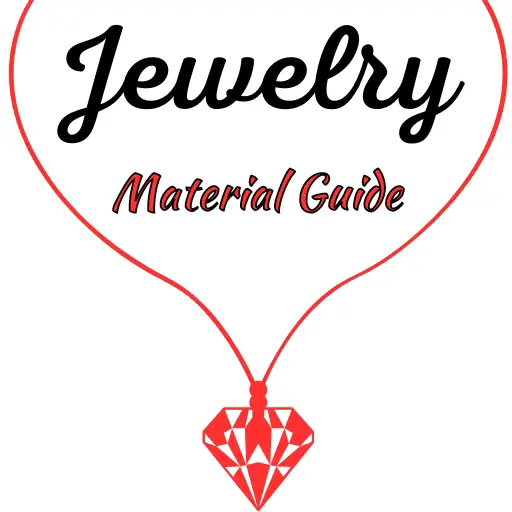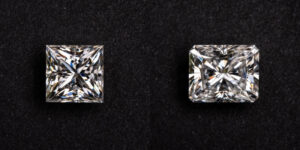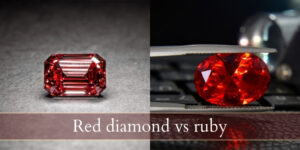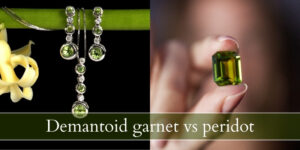When trying to learn everything you can about diamonds, you’ll surely find yourself wondering whether the girdle is too thin or too thick. You always find the grade on the diamond report, but just what is a diamond girdle, and why does it matter if it’s thick or thin ? How does it affect the sparkle ? Does it actually matter ? All this and more, coming right up ! First though, let’s see just what a diamond girdle is.
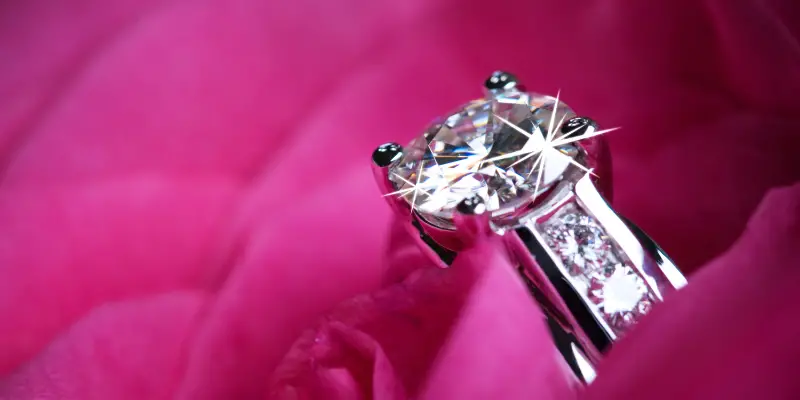
What is a diamond girdle ?
A diamond’s girdle is the band where the crown and the pavilion meet. This band can be very thick, or very thin, and anything in between. All diamonds have a girdle, and it varies in its exact look from gem to gem.
Diamond girdles range from extremely thin to extremely thick, and the girdle thickness factors into the cut quality grade. An overly thin or thick girdle will affect light performance, but it’s especially the too thick ones that contribute to a poor cut quality, and thus poor light performance.
The usual girdle grading scale is the one used by GIA, and it goes like this:
- extremely thin
- very thin
- thin
- medium
- slightly thick
- thick
- very thick
- extremely thick
A diamond’s girdle thickness is graded by looking at the height of the valleys and hills (high and low points) created when the girdle meets the facets on the crown. It’s important to note that the girdle can vary in thickness on one side, so the same diamond can have extremely thin and very thin edges, or slightly thick and thick girdle. This is common, and a natural ‘flaw’ due to the fact that diamonds are very small and their facets are even smaller. Cutting a diamond perfectly truly is a difficult task.
Each and every diamond has its own girdle thickness and this is only a small part of what makes the diamond beautiful or the way light bounces within the diamond. You can still work with a thick or thin girdle, depending on what you like in a diamond and what sort of setting you’d prefer.
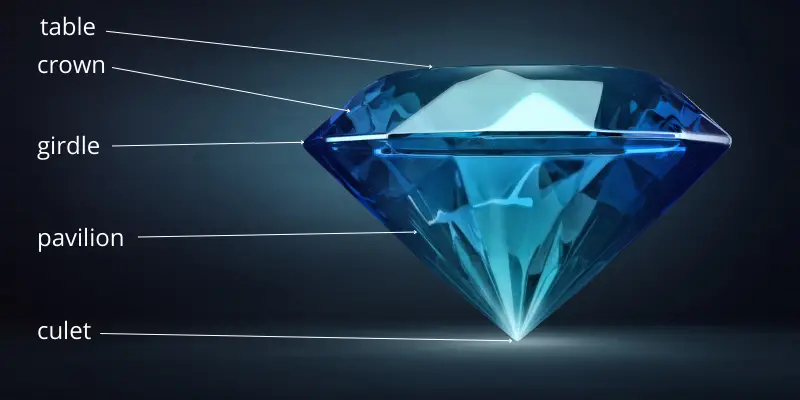
Look at the girdle’s finish
Faceted, polished, or bruted are the three main types of girdle you will see. The girdle is essentially another facet, so it will interact with light. Naturally you want a girdle that will enhance your diamond’s light performance, not hamper it. So you want a girdle that is either faceted or polished. A bruted girdle is a very rough texture one, like polishing with large grit. It can result from a poor polish, not polishing the rough enough, the diamond chipping, exposing the diamond grain, and so on. These are quite rare.
Faceted girdles are exactly that, faceted. They don’t form a perfect circle, rather a series a of small, splinter-thin facets that together form the rough shape of a circle.
Polished girdles are the perfectly round looking ones, with the same amount of polish as the rest of the facets on a diamond. Faceted girdles are also polished, but they are not one continuous band.
Read also: What Is A Diamond Culet ? Should It Have One ?
Should a diamond girdle be thick or thin ?
The ideal round diamond girdle is a medium one (thin to slightly thick), allowing plenty of light into the diamond but not too thick as to hide some of the light. The thickness of the girdle can vary sometimes within the same diamond, which is to be expected. If there is variation it shouldn’t be too much, such as thin to extremely thick, or extremely thick to medium. If there is severe variation you can expect the rest of the diamond to show symmetry faults.
Varying girdle thickness is most common in elongated shapes with a pointed tip, such as marquise or pear. In these cases a thicker girdle near the tips helps prevent damage to the diamond. The sharper the point of a diamond (including the girdle), the more prone it is to breaking or chipping.
Too thick a girdle may distort light
When the girdle is too thick, it raises the overall height of the diamond, leading to a diamond that’s cut too deep. This means there won’t be enough light exiting the table, offering poorer light performance. This is usually the case with extremely thick girdles, the ones that look like part of the diamond’s outer edge was sanded off.
There is no real way to fix a girdle that’s too thick, save from re-polishing the girdle into a thinner one, which will also take away from the crown and pavilion, and is very likely to produce a wholly different diamond cut. If the diamonds you’re looking at have very thick girdles, it’s a good idea to put them down and look for thinner ones, like a medium or a slightly thick.
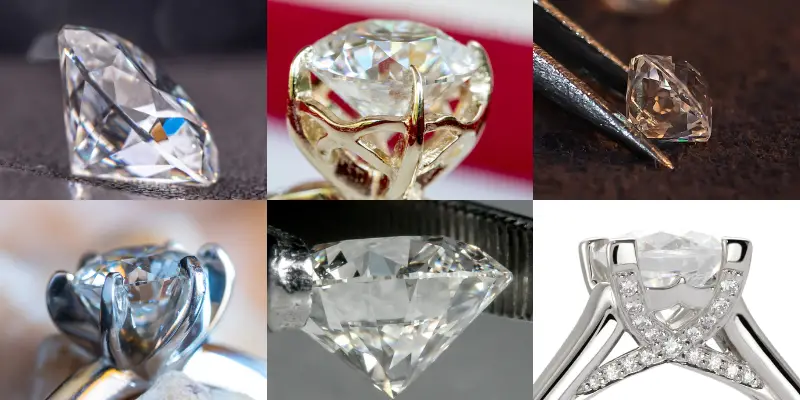
Too thin a girdle may chip off
So what if you go for a thin girdle, to be sure you don’t miss out on light performance ? Thin girdles can be too thin sometimes, and provide a perfect spot for the diamond to chip or splinter. Unfortunately the very thin and sharp parts of a diamond (girdle, culet, the points on a pear or marquise) are the ones most prone to breakage. Fortunately it’s easier to mitigate the danger of a thin or too thin girdle, than a too thick one.
A very protective setting (bezel, usually) is going to keep the girdle secure and nothing would actually touch the girdle itself (ideally). Another option is to have the diamond be sanded off just a little, just enough to thicken that girdle. This is not easy and may prove risky.
How to protect the diamond girdle
Whichever girdle your diamond has, it needs protection. Some of these options are perfect for thin girdles that are too thin, but they are easily applied to any girdle.
Tension, half bezel, and twist settings are not as safe as others. Tension and twist settings rely heavily on the metal band to hold the diamond in place by the girdle, and this can easily put too much stress it. We recommend against it. The half bezel is beautiful but make sure you have a sturdy, medium or slightly thick girdle on the parts that are not covered by a girdle.
Opt for a bezel setting to fully wrap around the girdle
The best and safest diamond setting is the bezel. It might not be the prettiest for some people, but it is the safest, without a doubt. A bezel setting means a band of metal (gold, platinum, titanium, whatever your ring is made of) wraps all around the girdle, and reaches just a little onto the crown.
Now some bezels also extend down to the pavilion, resembling a tube that connects to the ring shank. Other bezels are just the band at the girdle, supported by shoulders, such as a cathedral setting.
Opt for a 6 or 8 prong setting to let in light and still have some protection
If you want your ring to get more light but still have protection, you will need at least 6 prongs, ideally 8. Four prongs are beautiful, dainty, but not as safe as 6 or 8. The less prongs you have, the more light that enters the diamond. But once one of the prongs gets loose, you only have 3 other ones holding the diamond in place, and not too much of the girdle’s surface is covered.
The more prongs on the ring, the more physical protection for the girdle. Most solitaires come in a 6 prong setting, which should be fine for most diamonds. Just be very careful with 4 prongs, you might be looking for your diamonds later, or looking at a chipped girdle.
Read also: Diamond Cut VS Clarity
Does the diamond’s girdle thickness actually matter ?
In the grand scheme of things the diamond’s girdle does not matter, not as much as cut quality, color, or clarity. A thick or thin girdle is only one small part of what makes a diamond pleasant to your eyes, so don’t focus too much on this one particular item. There is also polish and symmetry, pavilion to crown height, culet to table alignment, and so on. Truly, the girdle is just one worry in many.
Go for the diamond that you like, regardless of the girdle thickness. We hope this post helped you understand why a too thin or too thick girdle can drive the price of a diamond down, but we also hope you could see that this is only one small part of what a diamond is.

I’m the main author for jewelrymaterialguide.com. I started this site after we did tons of research before our wedding and noticed that there is information about rings, jewelry, and so on that is really hard to find on the internet.
